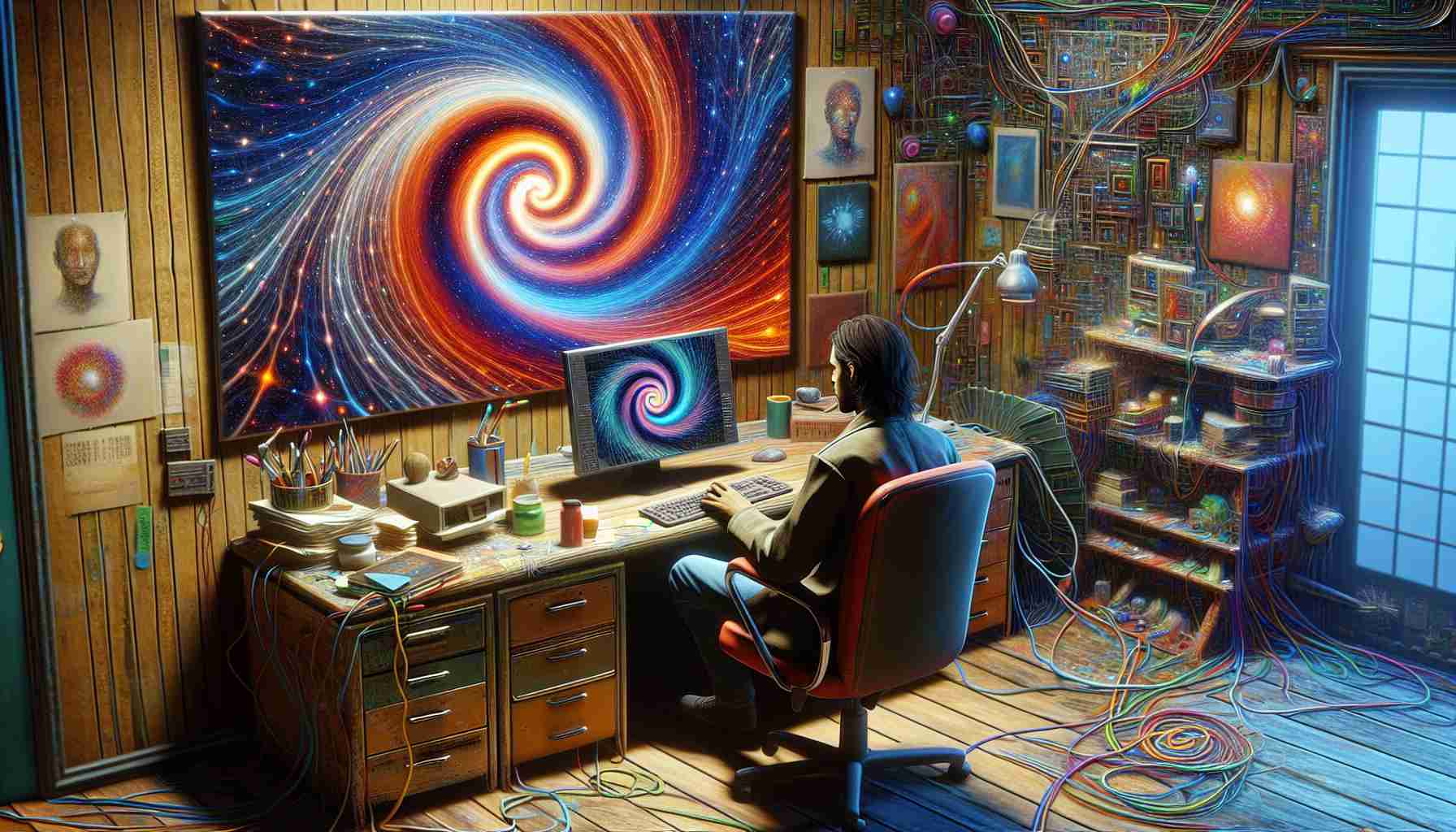- Paul, diagnosed with ALS, utilizes AI art to express creativity despite physical limitations.
- He generates whimsical prompts that transform into striking visuals, providing humor and insight into his thoughts.
- His artwork serves as a means of connection among friends, fostering lighthearted conversations.
- Paul’s journey illustrates the significance of creativity and humor when confronting serious challenges.
- Ultimately, it emphasizes the importance of fostering connection and joy amidst life’s struggles.
In a poignant twist of fate, Paul, diagnosed with ALS, channeled his declining strength into a vibrant burst of creativity through AI art. Confined to a chair, the once-active 42-year-old tapped into the world of Midjourney, an artificial intelligence image generator, allowing his imagination to break free despite his physical limitations.
With humor often blanketing his harsh reality, Paul began crafting whimsical prompts like “A man dressed as a bat sitting in a hot tub full of mashed potatoes,” offering his friends a unique glimpse into his mind. Within seconds, Midjourney transformed his bizarre ideas into striking visual representations, poignant reminders of laughter amongst sorrow.
As friends in a supportive group chat, Paul encouraged a playful exchange filled with humorous memes and evocative discussions. With each digital creation—like “The Kansas City Chiefs playing in hell” or “This couch eats people”—he defied the desolation of his condition and invited his buddies to join a quirky, imaginative adventure that lightened their hearts amidst heavy conversations.
Paul’s journey reminds us of the power of creativity and humor, especially in confronting life’s toughest challenges. Through his captivating images, he didn’t just cope with the loss of mobility; he ignited a shared joy, demonstrating that even in our darkest times, we can find bright moments of laughter and connection.
The key takeaway? Embrace creativity as a means to foster connection, even in the face of life’s most daunting adversities.
Unleashing Creativity: How AI Art is Transforming Lives
The Power of AI in Creative Expression
Paul’s journey with ALS and the embrace of AI art through tools like Midjourney illustrates a broader trend in how artificial intelligence can enhance creativity, especially among those facing physical limitations. Building on Paul’s experience, the application of AI in art is not just a novelty but represents a significant innovation that allows individuals to express themselves in ways they couldn’t before.
Insights into AI Art
1. Market Trends: The AI art market is projected to grow significantly, with more people turning to AI tools for creative expression. As of 2023, the AI art market is expected to reach over $1 billion by 2025, as users from various backgrounds increasingly adopt these technologies for personal and professional projects.
2. Use Cases: AI-generated art is being utilized across multiple sectors, including:
– Therapeutic settings: Helping patients cope with chronic illnesses through creative outlets.
– Market research: Companies use AI art for branding, advertising, and user engagement.
– Education: Schools are integrating AI tools to teach creativity and technology to students.
3. Innovations: Recent advancements in AI art include improved neural networks that produce more intricate and context-aware artwork, allowing for greater depth and relatability in creations. This innovation has opened doors for artists, hobbyists, and even those with disabilities, fostering inclusivity in art.
Key Questions About AI Art and This Movement
1. How does AI art therapy benefit those with disabilities?
AI art therapy allows individuals with disabilities to explore their creativity without the physical restrictions they may face. It provides them a platform to express their feelings and thoughts through visual means, promoting mental health and emotional well-being.
2. What are the ethical considerations surrounding AI-generated art?
As AI becomes more prevalent in art creation, discussions around copyright, ownership, and the potential for AI to replace human artists are becoming critical. It’s vital for creators to understand the implications of using AI tools and how to navigate intellectual property issues.
3. Can AI art interpretation change the perception of creativity?
Yes, AI-generated art presents a novel perspective on creativity, suggesting that creativity is not solely a human trait. This can lead to broader philosophical discussions about the nature of creativity and the role of technology in artistic expression.
Conclusion
Paul’s innovative use of AI art not only serves as an inspiration but also highlights a significant cultural shift towards leveraging technology to overcome life’s challenges. This movement emphasizes creativity as a channel for connection and joy, even during the darkest times.
For more insights on the transformative power of AI in creativity, visit Artificial Intelligence Art.
